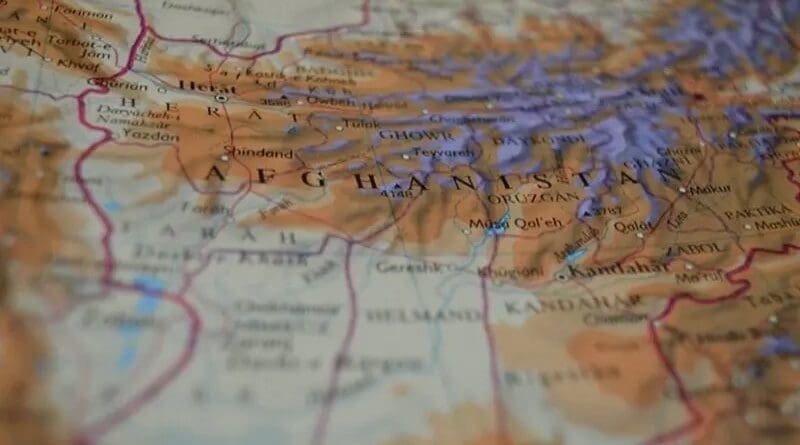Pakistan’s Afghanistan Policy And A Troubled Peace Process – Analysis
By IPCS
By Dr Shalini Chawla *
While the world is engrossed in the intensifying the fight against the COVID-19 pandemic, Afghanistan’s peace process is finding it difficult to draw the necessary time and attention from the international community. The Taliban rejected the Afghan government’s appeal for a ceasefire during the month of Ramzan and termed the demand as ‘not rational and convincing’.
The US-Taliban agreement signed on 29 February 2020 faces critical challenges: 1) The Taliban have continued to attack Afghan forces; 2) The Taliban and the Afghan government have been wrangling on prisoner releases (which Taliban view as a pre-requisite for commencing the intra-Afghan dialogue). The release of up to 5,000 Taliban prisoners, which is part of the US-Taliban deal, is currently the most contentious issue between the Taliban and the Afghan government; 3) The dispute over the outcome of Afghanistan’s controversial 2019 presidential elections leading to a Ghani-Abdullah contestation is still ongoing; 4) the US’s announcement of aid reduction to Afghanistan’s security forces by US$ 1 billion further weakens the Afghan government’s negotiating position and impedes its ability to fight the Taliban; and 5) the COVID-19 pandemic has introduced an additional challenge for the Afghan government.
The Taliban has presence in over 60 per cent of Afghanistan’s territory. It has also maintained a strong position throughout its negotiations with the US and resisted the Afghan government’s inclusion in the process. While there are multiple factors that contributed to the Taliban’s stature and strength in the process, two factors have been extremely critical: 1) Pakistan’s patronage and consistent support to the Taliban; and 2) the US’ desperation to leave Afghanistan. The US-Taliban deal is essentially a victory for the Taliban, the jihadi groups and Pakistan’s long, obsessive, abortive strategy of seeking strategic depth in Afghanistan. This deal is viewed in Rawalpindi as a resounding triumph and Pakistan feels it has managed to get a favourable deal which is seemingly in sync with its strategic objectives in Kabul.
In this context, it is worthwhile to examine Pakistan’s objectives in Afghanistan, which have directed its actions and persistent patronising of the terror groups/non-state actors. Undoubtedly, Pakistan has been obsessed with the desire to gain strategic depth in Afghanistan. Pakistan’s military and its intelligence agency, the Inter-Services Intelligence (ISI), formulated and executed the policy of strategic depth from the late 1980s through the 1990s, when it strongly backed the Taliban. Till date, they deeply believe in gaining strong control over Afghanistan. At no stage was the policy of gaining strategic depth logical or viable for Pakistan. Its adoption of the doctrine of strategic depth and, in turn, attempt to control over Afghanistan is widely considered (by rational thinkers within Pakistan and the international community) a strategic blunder that facilitated Pakistan’s drift into extremism, disallowing it the option of altering its strategic calculus. In Pakistan’s perception, the strategic depth policy has allowed it to maintain a conventional balance against India; but on the other hand, this policy has led to a blowback in the form of intense militancy and extremism in Pakistan. There has been a change in the terminology regarding Pakistan’s policy in Afghanistan, and, although the term ‘strategic depth’ is not used any more, the bottom line remains largely unaltered.
Pakistan’s rationalisation of its quest for control and influence in Afghanistan is driven by several motivations which seem unlikely to change. They include:
- The lingering Afghanistan-Pakistan border issue based on the disagreement over the Durand Line, which separates Pakistan’s tribal areas of Khyber Pakhtunkhwa from Afghanistan. No Afghan regime, including the Burhanuddin Rabbani government of the mid-1990s, has ever accepted the legitimacy of the border drawn by the British in 1893—the so-called Durand Line.
- Pakistan has faced the issue of Pashtun nationalism which demanded a separate Pashtunistan since the 1940s. Control and influence over Afghanistan by a Pashtun dominated (essentially Taliban) government would, therefore, reduce the demand (within Pakistan) for a separate Pashtunistan and yet have Pakistani Pashtuns under the establishment’s control.
- Pakistan used the Afghan territory as a safe haven to train terror outfits such as the Harkat-ul-Mujahideen (HuM), Jaish-e-Muhammad (JeM) and Lashkar-e-Taiba (LeT) (beginning in the late 1980s).
- Pakistan holds that a pro-Pakistan government in Afghanistan is necessary to undermine Indian influence in Afghanistan.
At present, the US-Taliban deal has brought Pakistan diplomatic, financial and strategic dividends. It is cherishing a revival of US support and acknowledgement of its role as a facilitator of the deal. Pakistan certainly views the Taliban as a reliable partner compared to the fractured political leadership in Afghanistan (which shares a healthy relationship with India). US Special Envoy for Afghanistan Reconciliation, Zalmay Khalilzad, and US Secretary of State, Mike Pompeo, have exchanged notes with India’s External Affairs Minister, S Jaishankar, on the situation in Afghanistan focusing on India’s engagement in regional affairs for lasting peace in Afghanistan.
However, the fact remains that New Delhi will be restricted in its position to play a role in Afghanistan given how the Taliban is dependent on Pakistan. Needless to say, Islamabad’s Afghanistan policy is unlikely to welcome a substantial Indian role in Afghanistan. Thus, although New Delhi is committed to a continued developmental role in Afghanistan, the course of events in Afghanistan will decide India’s future stances.
*Dr Shalini Chawla is a Distinguished Fellow at the Centre for Air Power Studies, New Delhi.

